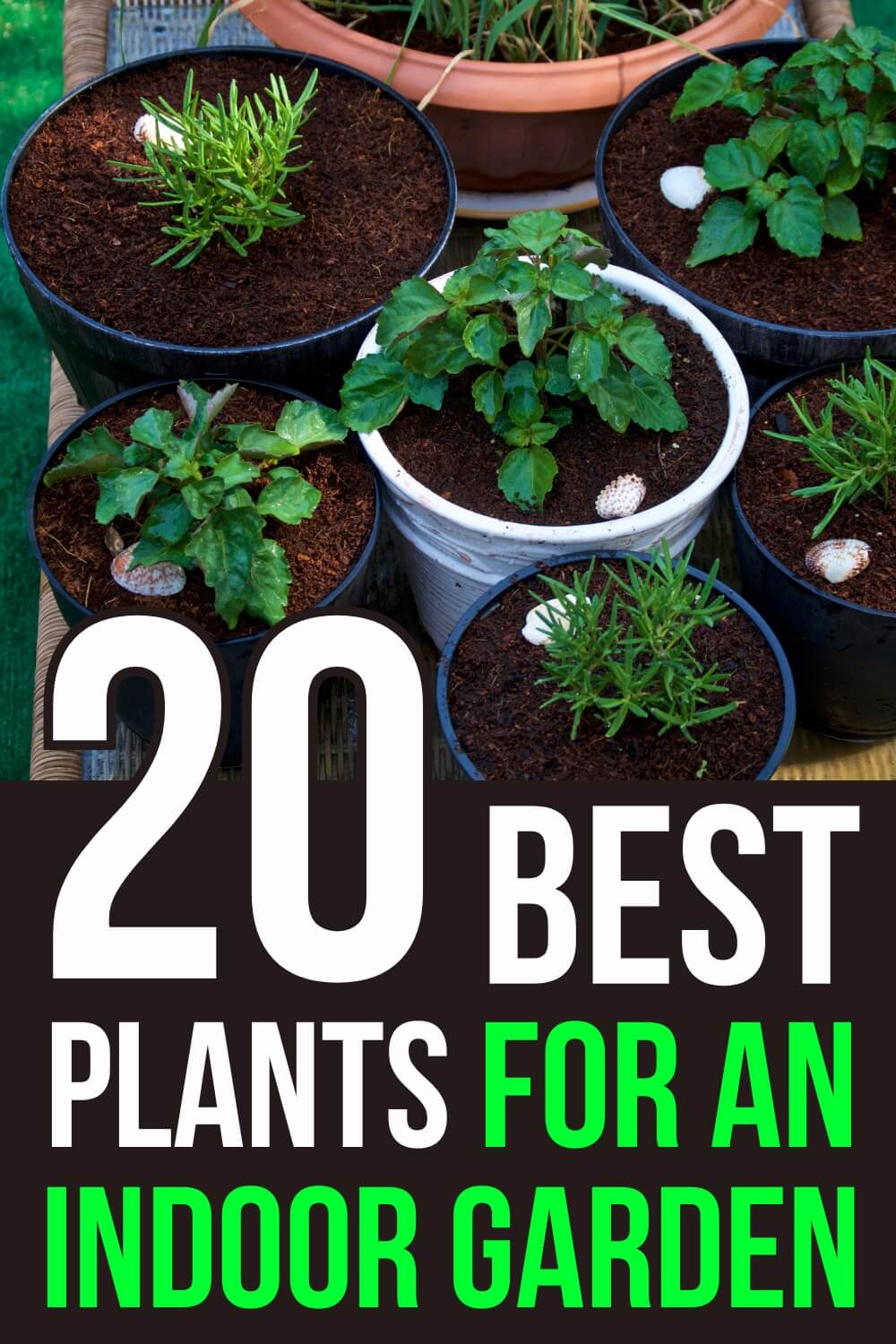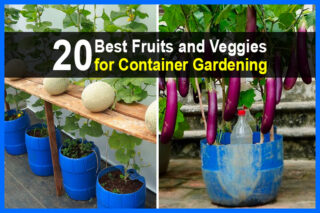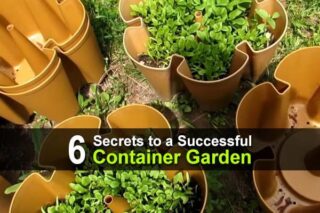Estimated reading time: 15 minutes
Once you've started growing your own food, it's hard to kick the habit. But what can you do when your region is experiencing frigid nighttime temperatures or your garden beds are covered in snow? The answer is to take up container gardening.
Many plants adapt well to indoor spaces – even small environments. You probably already keep your home at a comfortable temperature for them, and pests are not as much of a problem as outdoors. If you monitor the nutrients and drainage of your potting soil, water sensibly, and provide plenty of light, you can maintain an indoor food garden all year round.
Here are some of the best choices for plants to grow indoors in containers throughout the year.
Want to save this post for later? Click Here to Pin It On Pinterest!
Baby Potatoes

Small, fast-growing potato varieties like fingerlings can be grown indoors in large containers. Use a wide, deep container, and fill it halfway with well-drained soil. Place potato pieces with “eyes” facing upward, cover them with a few inches of soil, and keep the container in a sunny area.
As the plants grow, add more soil around the stems to encourage more tuber production. In a few months, you’ll be able to dig into the soil and harvest small, delicious potatoes.
Here’s more on growing baby potatoes indoors.
Beets

Like some of the other veggies on this list, you can grow beets for their greens or their roots. Beet greens look and taste like their cousin plant, Swiss chard. Baby beets, which go from seed to harvest in 40 days, are an excellent choice for indoor growing.
After planting beet seeds, you'll need to thin the multiple seedlings that sprout from a single seed. You can consume the tasty thinned seedlings as microgreens.
Here's more on how to grow beets indoors.
Bok Choy

Bok choy, or Chinese cabbage, is an excellent leafy green for indoor gardening. It grows quickly and can be harvested in stages, taking leaves as needed. Plant seeds in a container that’s at least six inches deep with nutrient-rich, well-drained soil. Bok choy prefers cooler temperatures and can tolerate indirect sunlight.
Within a month, you’ll be able to start harvesting the leaves. Regular watering is essential, but avoid waterlogging the soil.
Here’s more on growing bok choy indoors.
Bush Beans
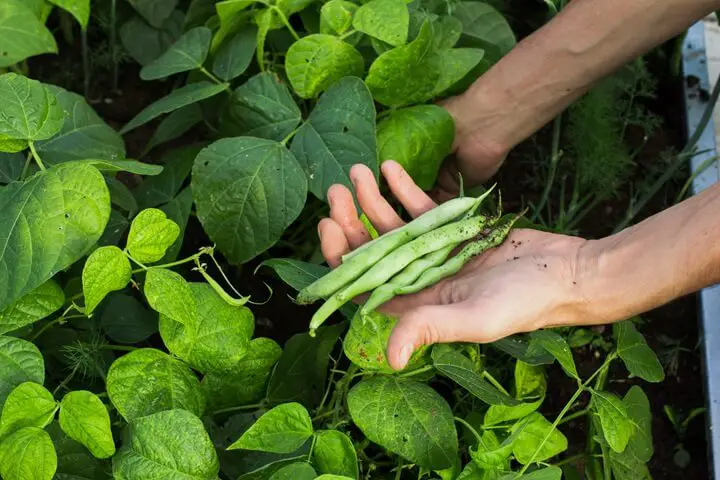
Bush beans are compact plants that can produce a sizeable harvest in a short time. After planting your seeds, you should see sprouts within two weeks. You'll be able to harvest in six to eight weeks.
Beans like moist soil conditions and abundant light. However, they can develop root rot if their roots are left in standing water for too long, they can rot.
Here's more on how to grow beans indoors.
Carrots

For indoor container growing, baby carrots fit the bill in many ways. They are easy to grow, mature quickly, and don't require as much space as regular carrots. You can go from seed to harvest in just 40 days for baby carrots.
Plant your seeds in loose, well-draining soil, lightly covering them with damp peat moss. Keep the soil moist, and you should see germination within two weeks.
Here's more on growing carrots indoors.
Citrus trees
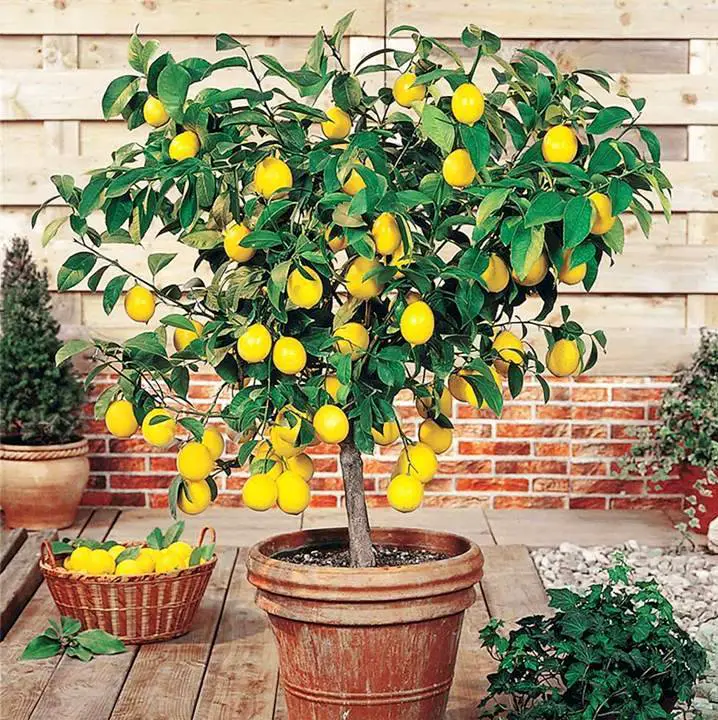
The next time you visit your local nursery, check out the compact citrus trees designed for indoor growing. The Meyer lemon tree, which produces fruit that tastes like a cross between a lemon and a Mandarin orange, is a good choice
These trees produce lovely flowers, but they do like things warm and humid. If your home gets dry, you may need to mist the leaves once or twice a day. Running a humidifier is another option.
As you learned with strawberries (above), you'll need to pollinate the fruit by hand.
Here's more on growing Meyer lemon trees indoors.
Garlic greens
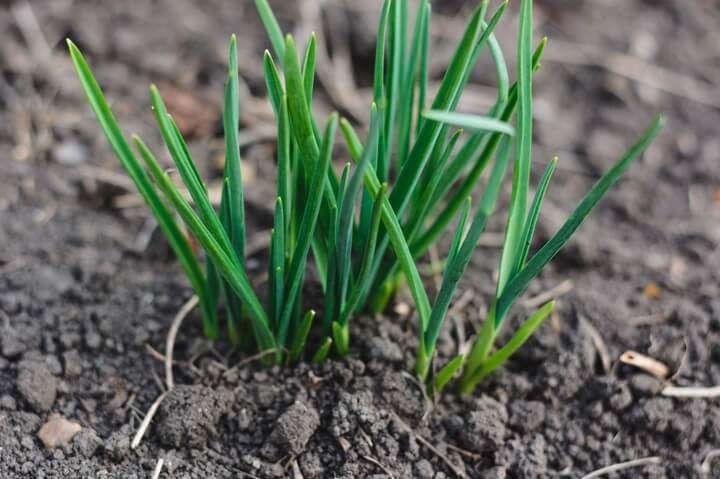
If you like the idea of growing perennials in your indoor food garden, garlic is another great choice. As with scallions, if you don't harvest the bulb, you can keep growing tasty garlic greens all year round.
You also don't need seeds to grow garlic. Plant garlic cloves two inches apart and two inches of soil. You should be able to harvest some greens within 21 days or when the greens are eight or more inches tall.
Garlic greens have a taste that is a bit milder than garlic and stronger than scallions.
Here's more on growing garlic indoors year round.
Ginger
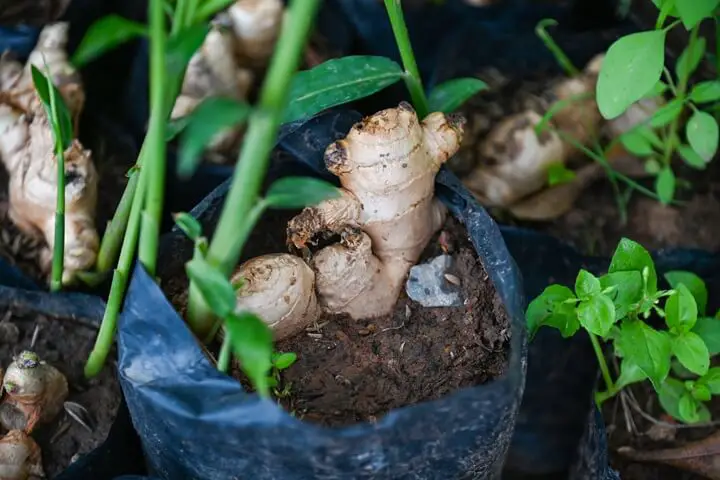
Ginger is an easy-to-grow tropical plant that thrives indoors and can be a long-term addition to your kitchen garden. Start with a fresh ginger root from the grocery store, preferably one with visible “eyes” or buds. Plant the root in a shallow container with well-draining soil, positioning the buds upward. Ginger loves indirect sunlight and warm, humid conditions.
With patience, your ginger plant will produce shoots, and you can start harvesting small portions of the root after a few months. Just pull back the soil, cut what you need, and cover the root again to allow regrowth.
Here’s more on how to grow ginger indoors.
Green Beans

Green beans are a quick-growing, low-maintenance vegetable that adapts well to indoor container gardening. Opt for dwarf varieties like bush beans, as they are more compact and don’t require much space. Plant the seeds about one inch deep in well-drained soil, and give them plenty of sunlight.
In just a few weeks, you’ll see sprouts, and the plant will start to develop pods. Keep the soil moist but not soggy, and you'll have a continuous harvest of beans for weeks.
Here’s more on growing green beans indoors.
Herbs
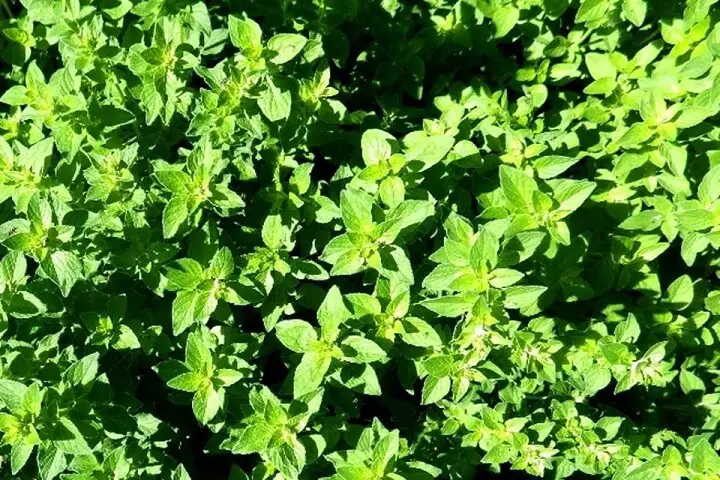
Herbs are another excellent option for all-year indoor growing. They are easy to grow and don't require much space. Plus, once you've grown accustomed to using fresh herbs in your recipes, stopping isn't easy.
Many herbs, including rosemary, basil, oregano, parsley, thyme, and mint, grow quickly under the right conditions. Those conditions include plenty of direct sunlight and moist soil, but not too wet.
You also have to be careful not to over-harvest your herbs. You can snip herbs once they've reached about six inches in height, but take care not to cut more than a couple of inches at a time.
Here's more on growing herbs indoors.
Leafy greens
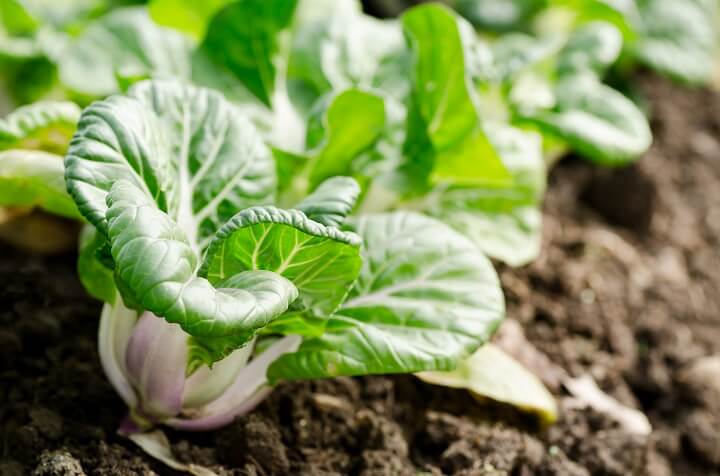
Lettuce, spinach, Swiss chard, kale, arugula, sorrel, and mustard greens are among your many indoor garden options. Baby varieties of leafy greens have shallow roots and grow quickly.
One of the advantages of growing these leafy greens indoors is that you can harvest as many or as few outer leaves as you like, allowing the center to continue growing.
Use a container that is two to four inches in depth and fill it with well-draining soil. After sowing, keep the seeds moist, and germination will appear in about a week.
Here's more on growing leafy greens.
Microgreens

Let's begin with an easy one. You can grow a thriving microgreen garden on a sunny kitchen windowsill all year long.
Since you're harvesting microgreens as seedlings, shallow pots and trays work well. Scatter your seeds in about two inches of moist, peat-based soil. Keep the soil moist; you should see some sprouting in a few days.
You can start harvesting when the seedlings are about two inches tall and have two sets of true leaves. Seed to harvest time is about 14 days. Try planting a mix of seeds from various herbs and greens, including Swiss chard, radishes, beets, kale, and basil.
Here's more on growing microgreens at home.
Peas

Peas are another option for indoor container growing. For best results, consider snap peas, snow peas, or dwarf peas. They all do well in containers and don't require much attention as long as they have adequate light, well-draining soil, and biweekly watering.
As the plants grow, you can snip the pea shoots for salads and then harvest the pea pods when they are ready. You can sow peas every few weeks for an ongoing harvest.
Here's more on how to grow peas indoors.
Peppers

With their interesting textures and bold colors, hot peppers are an attractive choice for indoor container gardening. Use containers that are at least eight inches in depth and plan for 10 hours of light exposure. Peppers prefer well-draining soil.
Depending on the variety, germination typically occurs between two and three weeks, with harvesting within 60 to 90 days.
Here's more on how to grow peppers all year long.
Radishes

Radishes are satisfying to grow indoors because they grow quickly and do not need much space. You'll need to plant seeds in a container of at least six inches of well-drained, loose soil.
Radishes sprout within a week or less, and you harvest this root vegetable in 30 to 40 days. You also can eat the radish greens, if you like. For radishes all year long, plant them in stages.
Here's more on growing radishes indoors.
Scallions

Also called green onions and bunching onions, scallions are perennial plants. That means you can keep harvesting the leafy green parts without replanting. And here's a bonus – you don't even need seeds to grow scallions indoors.
Soon after you place a bunch of scallions in a container filled with about an inch of water, you'll notice thin, white roots forming. When the roots reach a couple of inches in length, move the bunch to a shallow container filled with loamy, well-draining soil to continue growth.
As you harvest the green tops, be sure to leave at least an inch of the stem for regrowth.
Here's more on growing scallions in containers.
Strawberries

Let's not forget fruits on this list. You can grow and harvest strawberries in indoor pots and hanging baskets. Alpine strawberries are an excellent choice.
Sow alpine strawberry seeds in moist, well-draining soil. Place containers in a south-facing window that gets eight to ten hours of sun each day. Or, use a grow light for about 12 each day.
In the outdoor garden, bees distribute pollen, but indoors, you'll need to help the process along. Use a small, soft paintbrush to spread pollen across the flower from the male to the female parts.
Here's how to pollinate strawberries indoors.
Swiss Chard
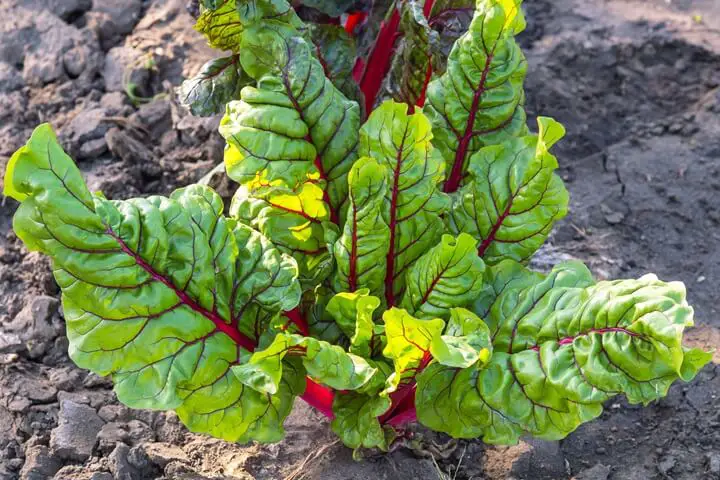
Swiss chard adds color to your indoor garden and is easy to grow in containers. Plant the seeds in a deep pot with well-drained soil, spacing them about four inches apart. Keep the soil evenly moist, and place the container in a spot with ample sunlight or near a grow light.
The leaves will start to appear within a few weeks, and you can begin harvesting when they’re about six inches tall. Take outer leaves to encourage the plant to keep producing new growth from the center.
Here’s more on growing Swiss chard indoors.
Tomatoes

Some tomato varieties adapt well to indoor containers, and you can grow certain ones in hanging baskets to take advantage of vertical space.
Look for compact varieties with “bush” or “patio” labels. These plants produce cherry, grape, Roma, and other small fruits. Indoor tomato plants tend to have weaker stems than outdoor tomato plants, so you may need to stake or trellis them for best results.
Tomatoes require a minimum of 10 hours of light each day. They prefer loamy, well-drained soil. You can expect a seed-to-harvest time of 50 to 65 days.
Here's more tips for growing tomatoes indoors.
Zucchini

Zucchini may seem like an outdoor crop, but compact varieties adapt surprisingly well to indoor container gardening. Choose a container at least 12 inches deep with good drainage, and plant seeds about one inch below the soil surface. Zucchini requires plenty of light, so position it near a sunny window or provide supplemental lighting for 10-12 hours a day.
Within a few weeks, you’ll notice the vibrant, large leaves, and the plant will soon start flowering. To ensure fruit production, use a small paintbrush to transfer pollen from male to female flowers. With proper care, you'll be able to harvest fresh zucchini from your indoor garden.
Here’s more on growing zucchini indoors.
Tips for indoor container growing
Here are some general tips for growing vegetables and fruits indoors:
- Grow vegetables in containers with ample drainage openings and are the correct size for the plant you're growing.
- Use a quality potting mix. These mixes usually have vermiculite or perlite as ingredients, which allow for better drainage.
- Provide adequate air circulation to prevent fungal and root problems.
- Provide access to direct sunlight and consider some type of supplemental lighting.
- Aim for a home temperature range of 60 to 75 degrees F.
- Learn about each plant's nutritional needs and apply fertilizer accordingly.
- Consider grouping plants with similar watering, light, and humidity needs together.
- Water with care, paying attention to the soil. The best way to tell if water is needed is to feel if the soil is dry one to two inches below the surface.
Like outdoor gardening, successful indoor gardening can be a matter of trial and error. Keep track of what works and what doesn't. Make necessary adjustments, and try again.
Like this post? Don't Forget to Pin It On Pinterest!
You May Also Like:

